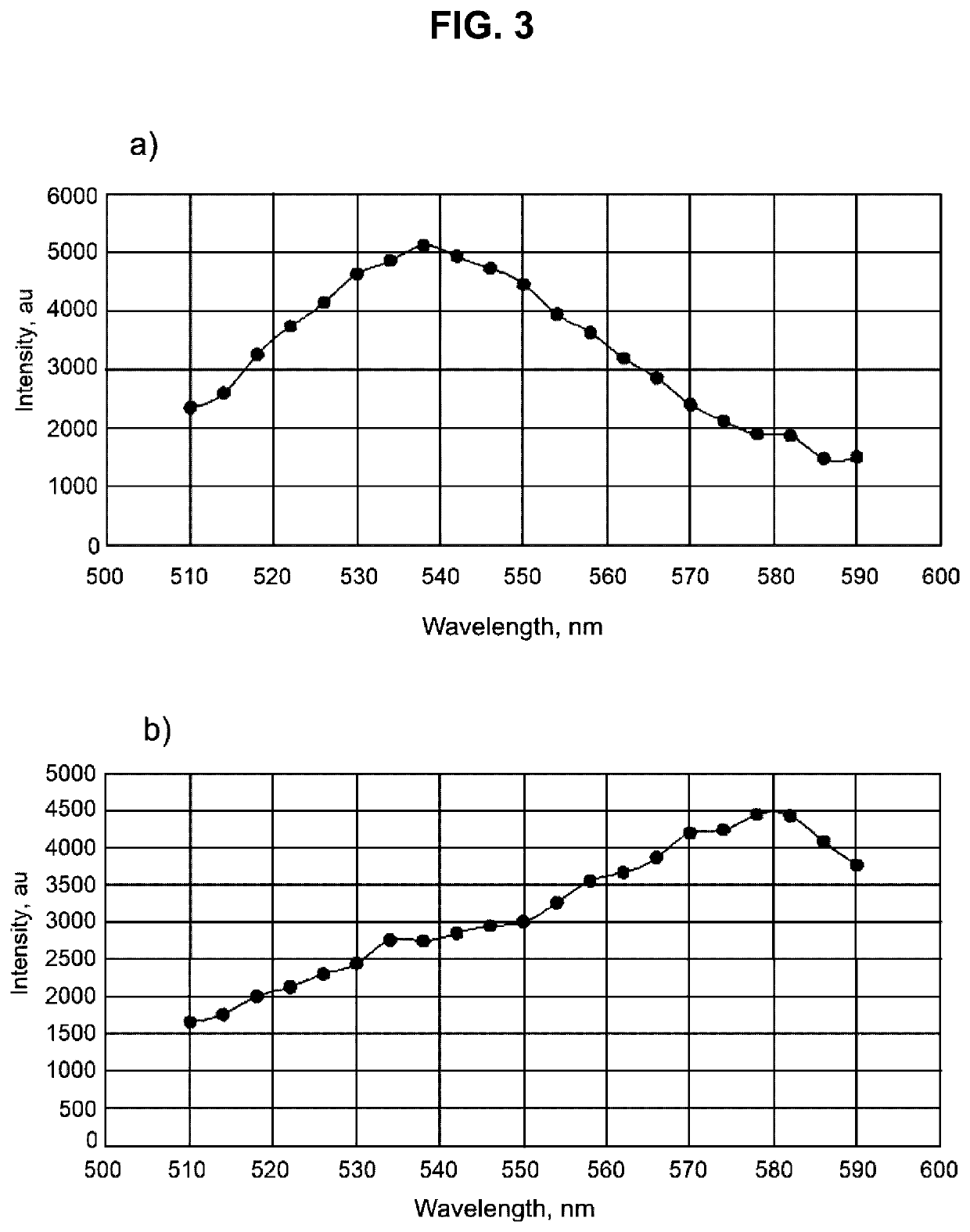Selective optical detection of organic analytes in liquids
a technology of organic analytes and optical detection, applied in the direction of fluorescence/phosphorescence, instruments, material analysis, etc., can solve the problems of inability to use methods without sample preparation, measurement errors, and inability to analyze, etc., to achieve high selectivity and specificity.
- Summary
- Abstract
- Description
- Claims
- Application Information
AI Technical Summary
Benefits of technology
Problems solved by technology
Method used
Image
Examples
example
[0189]The following example illustrates applicability of the methods described herein without limiting the scope thereof, and concerns determination of concentration of an analyte which is a water-soluble bioactive molecule by using the displacement method as illustrated in FIG. 9.
[0190]Preparation of the Assay Substrate
[0191]The reaction mixture was prepared, consisting of the following components:
[0192]400 μL of 10 mM boronic acid saline buffer, containing 50 mM NaCl, pH 7.5
[0193]25 μL of QD suspension (1 mg / mL) in water,
[0194]90 μL (3 mM) 1,6-diaminohexane,
[0195]7 μL of 10 mM aptamer, which contains carboxyl groups
[0196]15 μL of mixture of EDC (20 mg / mL) and NHS (1 mg / mL).
[0197]This mixture was added to mica discs, preliminarily modified with (EtO)3Si(CH2)3NH2. The discs were incubated with the reaction mixture during 1 h, and then washed with water and dried in vacuum. For finishing synthesis of the substrate the modified mica discs were soaked in 10 mM phosphate buffer containi...
PUM
| Property | Measurement | Unit |
|---|---|---|
| thickness | aaaaa | aaaaa |
| temperature | aaaaa | aaaaa |
| temperature | aaaaa | aaaaa |
Abstract
Description
Claims
Application Information
 Login to View More
Login to View More - R&D
- Intellectual Property
- Life Sciences
- Materials
- Tech Scout
- Unparalleled Data Quality
- Higher Quality Content
- 60% Fewer Hallucinations
Browse by: Latest US Patents, China's latest patents, Technical Efficacy Thesaurus, Application Domain, Technology Topic, Popular Technical Reports.
© 2025 PatSnap. All rights reserved.Legal|Privacy policy|Modern Slavery Act Transparency Statement|Sitemap|About US| Contact US: help@patsnap.com



